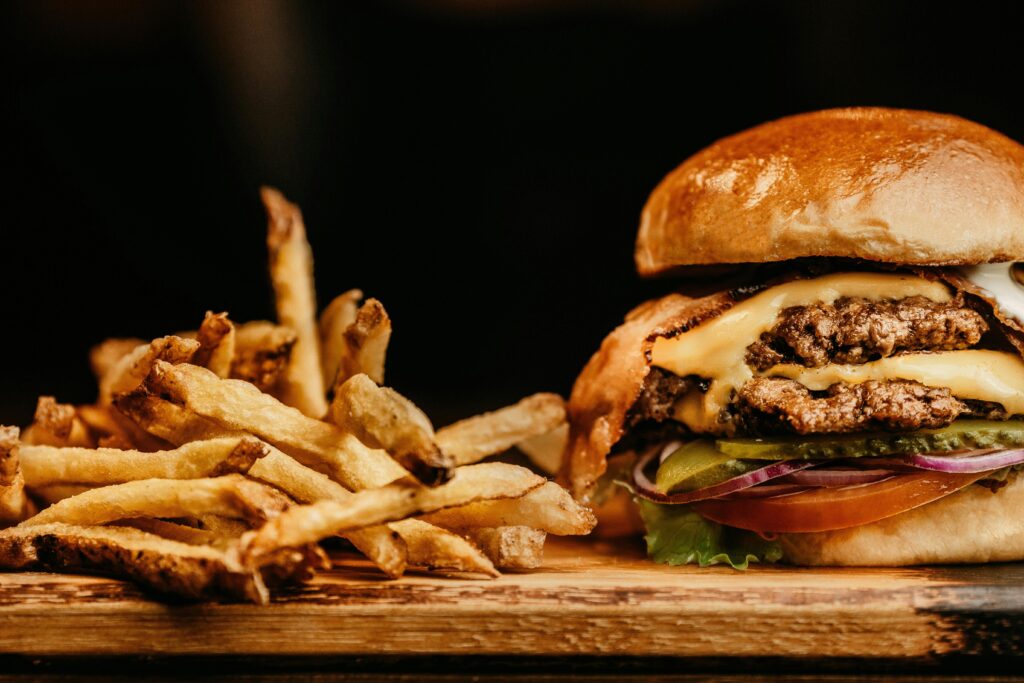
Mukbang is where junk food flourishes most.
What is Mukbang?
Mukbang, a blend of the Korean words for “eating” and “broadcast,” originated in South Korea and quickly gained international popularity. This unique format involves hosts consuming large quantities of food while engaging with viewers through live streams or pre-recorded videos. Mukbang has evolved into a global phenomenon, with content creators from various backgrounds embracing the trend.

The Positives
- Community and Connection – It fosters a sense of community. Many viewers tune in to enjoy the shared experience of eating, making it feel as if they are dining with the host. This connection can combat feelings of loneliness, especially for those eating alone.
- Culinary Exploration – It encourages culinary exploration. Hosts often showcase a wide variety of foods, introducing viewers to different cuisines, cooking styles and unique dishes they may not have tried otherwise.
- Entertainment Factor – The entertaining aspect of mukbang can’t be overlooked. Many hosts incorporate humor, storytelling, or challenges, keeping viewers engaged while they watch the food consumption.
- Cultural Exchange – As mukbang spreads globally, it serves as a platform for cultural exchange. Viewers learn about different foods and eating customs, promoting appreciation for diverse cultures.
The Negatives
- Health Concerns: One of the major criticisms of mukbang is its potential to promote unhealthy eating habits. The consumption of excessive amounts of food can normalize binge eating, leading to health issues such as obesity and related diseases.
- Pressure on Creators – Creators often feel pressured to produce content that involves large quantities of food, which can lead to physical and mental health challenges. This pressure can create a cycle of unhealthy eating behaviors.
- Wastefulness – In some cases, the amount of food wasted during mukbang sessions can be alarming. This raises ethical concerns about food waste and sustainability, especially in a world where many struggle with food insecurity.
- Addiction to Content – The engaging nature of mukbang can lead to excessive screen time. Viewers may find themselves spending hours watching these videos, which can detract from real-life social interactions and activities.
Why is Mukbang Still Popular?
Despite the negatives, mukbang remains a captivating trend for several reasons:
- Relatable Content – The simple act of eating resonates with a broad audience. Mukbang taps into a universal experience, making it easy for viewers to relate to and enjoy.
- Variety of Personalities – Its creators come from diverse backgrounds, offering various personalities and styles. This diversity attracts different audiences and keeps the content fresh.
- Social Media Influence – Platforms like YouTube, TikTok, and Instagram play a significant role in mukbang’s popularity. The shareability of videos and the ability to interact with creators directly enhance viewer engagement.
- Coping Mechanism – For many, watching mukbang can be a form of escapism or a way to unwind. The comforting nature of eating and watching someone indulge can be soothing, especially in stressful times.
Mukbang is a multifaceted trend that reflects cultural shifts in eating habits and digital engagement. While it offers a sense of community, culinary exploration, and entertainment, it also raises valid health and ethical concerns. As this trend continues to evolve, it’s essential for viewers and creators alike to find a balance that promotes enjoyment without compromising well-being. Whether you’re a fan of mukbang or simply curious, understanding its complexities can enhance your viewing experience and foster healthier consumption habits.





